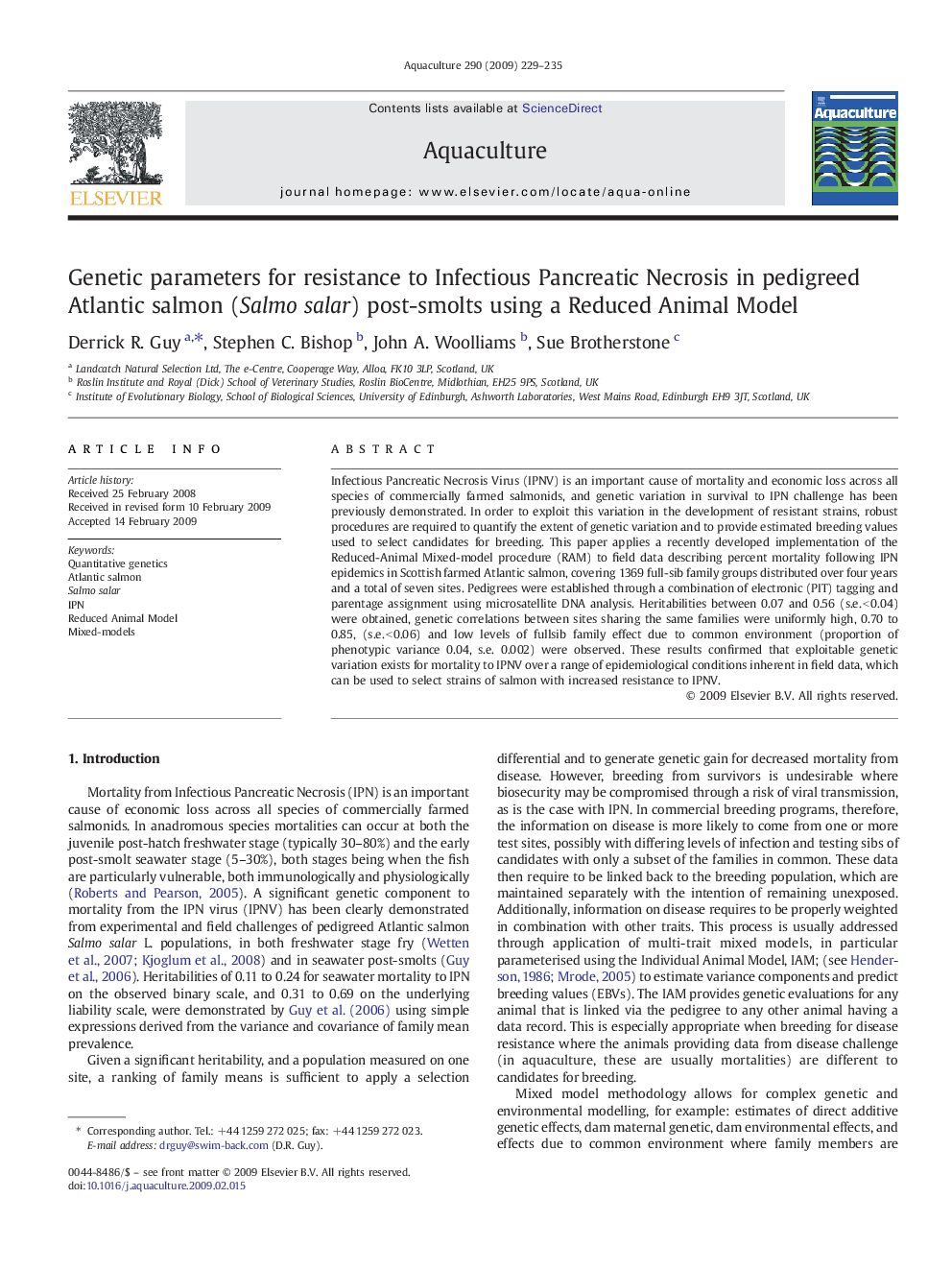| Article ID | Journal | Published Year | Pages | File Type |
|---|---|---|---|---|
| 2424137 | Aquaculture | 2009 | 7 Pages |
Infectious Pancreatic Necrosis Virus (IPNV) is an important cause of mortality and economic loss across all species of commercially farmed salmonids, and genetic variation in survival to IPN challenge has been previously demonstrated. In order to exploit this variation in the development of resistant strains, robust procedures are required to quantify the extent of genetic variation and to provide estimated breeding values used to select candidates for breeding. This paper applies a recently developed implementation of the Reduced-Animal Mixed-model procedure (RAM) to field data describing percent mortality following IPN epidemics in Scottish farmed Atlantic salmon, covering 1369 full-sib family groups distributed over four years and a total of seven sites. Pedigrees were established through a combination of electronic (PIT) tagging and parentage assignment using microsatellite DNA analysis. Heritabilities between 0.07 and 0.56 (s.e. < 0.04) were obtained, genetic correlations between sites sharing the same families were uniformly high, 0.70 to 0.85, (s.e. < 0.06) and low levels of fullsib family effect due to common environment (proportion of phenotypic variance 0.04, s.e. 0.002) were observed. These results confirmed that exploitable genetic variation exists for mortality to IPNV over a range of epidemiological conditions inherent in field data, which can be used to select strains of salmon with increased resistance to IPNV.
